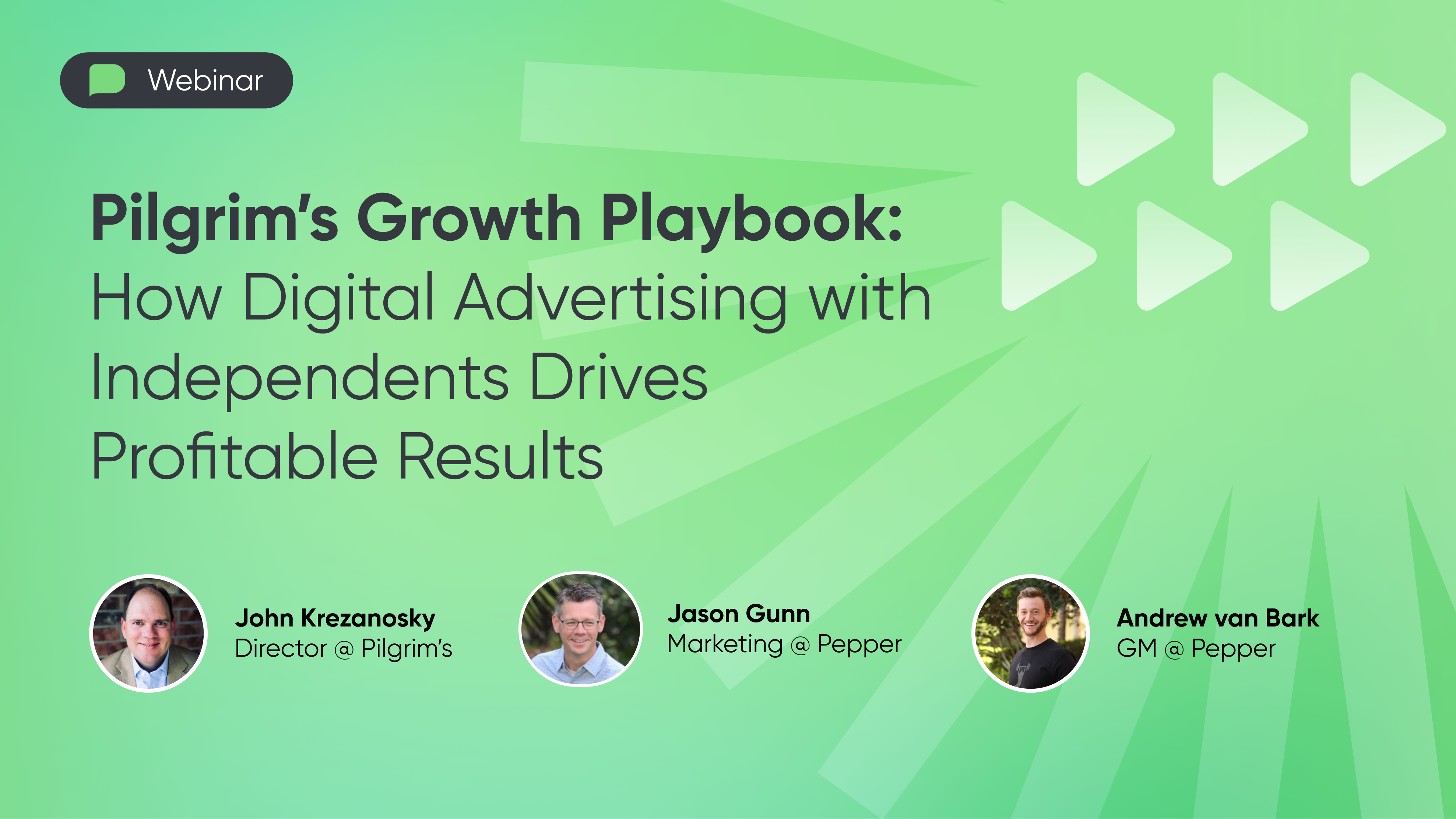In our latest webinar the Pepper team focused on one big topic: How distributors can nail their e-commerce rollout and drive real customer adoption from day one.
From catalog cleanup and pricing audits to customer segmentation, the team walked through the exact checklist they use across hundreds of implementations and what actually separates smooth, high-adoption launches from slow, painful ones.
Why E-Commerce “Readiness” Matters
Before diving into features or strategy, the team made one point clear: Your rollout is only as strong as the preparation behind it.
Whether you’re launching Pepper for the first time or refreshing your digital strategy, taking time to align your data, internal processes, and customer strategy can be the difference between a 2-month rollout and a 10-month one.
Emma Phillips (Head of Implementations) put it best: “There are a lot of decisions to make, and they go smoother when you’ve done the thinking up front.”
The 5-Question Checklist for an A+ Rollout
Pepper’s implementation team has completed hundreds of rollouts—and while every distributor runs their business differently, the same five questions always predict whether a launch will be successful.
Let’s break them down:
1. Is Your Catalog Ready for E-Commerce?
Your digital storefront needs to be customer-friendly
Distributors often assume their item catalog is “fine” because it works internally. But once it's customer-facing, inconsistencies become friction.
The team highlighted the most common catalog blockers:
✅ Duplicate values (item name repeated in description)
✅ Inconsistent formatting (brand, pack size, category blended together)
✅ Internal abbreviations customers won’t understand
❌ Missing images - still the #1 blocker to online ordering
Pepper’s image-matching superpower
To help customers get image coverage fast, Pepper automatically matches your items to their product content library using:
- GTINs (Global Trade Item Numbers)
- MPNs (Manufacturer Product Numbers)
- Item Metadata like item names, brands, pack sizes, and descriptions
Teams receive a human-review queue with a confidence score, making cleanup simple - even if you’re starting with zero images.
2. Do You Really Know Your Pricing?
Pricing is almost always the most complex part of onboarding, but is filled with inconsistencies and one-off applications that usually live inside one person’s head.
Emma shared the typical “pricing pyramid” every distributor should map:
Most Specific:
Customer-item contract pricing
Chains:
Bid files, negotiated deals
Groups/Levels:
Price groups, cost-plus tiers, rep-assigned buckets
Base Pricing:
Your default list price
If it’s not written down, write it down. This single action often cuts implementation time in half.
Integrations: should Pepper preserve your pricing on order import?
Hayden Asquith (Dir. Of implementation) explained the key decision: Do you want Pepper to send the exact price the customer saw at purchase time, or should your ERP re-price the order?
Sending the exact price may work if your prices don’t change often, but many goods are volatile enough that they even change throughout the day. Most produce & seafood distributors re-price, but always preserve promotional prices and any rep-edited prices from DSR Connect.
3. Do You Know Your Customer Segments?
Not every customer should have an identical app experience.
Segmentation affects far more than marketing - it’s baked directly into your operating rules.
Common examples:
- Chains: fixed assortments, no minimums, unique delivery schedule
- Street accounts: open catalog, order minimums, earlier cutoffs
- Schools / Hospitals / Jails: strict inclusions, billing rules, or compliance needs
- Cash & Carry: pickup behavior, different fulfillment days
Pepper can apply different logic to each segment:
- Order minimums
- Delivery windows
- Cutoff times
- Item inclusions / exclusions
- Promotions and featured products
- Broadcast messaging
The hidden segmentation issue: delivery days
Many distributors think they have delivery days documented - but often, it’s tribal knowledge. If your ERP doesn’t store delivery days, your e-commerce platform can’t enforce ordering rules.
Our team frequently helps clean this up in week one - do you know your business logic for deliveries?
4. What Is Your Order Guide Strategy?
Your order guide is the landing page for every buyer. It determines whether they place an order in seconds or in minutes.
Pepper automatically builds order guides in a few ways:
- Purchase history (most common – last 90–120 days)
- Custom guides imported from your ERP
- Hybrid: ERP guide + recently purchased additions
Customers can then tailor their experience based on a variety of features: Drag-and-drop reordering, Shelf-to-sheet sequences, Multiple guides (weekday vs weekend, kitchen vs bar, manager-specific guides) and even Par levels for different days of the week.
This flexibility dramatically boosts adoption, especially among high-volume accounts.
5. Have You Structured Your Launch for Customer Adoption?
The most successful Pepper launches always have two things:
Having a clear KPI
Examples include:
- % of customers placing orders online
- % of weekly volume coming through Pepper
- Number of active sales reps using DSR Connect
- Image coverage target
- Launch timeline alignment with ERP go-lives
Hayden shared:
“We take a ton of pride in getting customers live fast - and getting hundreds of their customers live immediately after launch.”
Designating a champion (or two)
High-adoption distributors always identify:
A Project Champion
Usually someone who can coordinate across leadership, sales, finance, IT, and Pepper’s team.
A DSR Champion
This is the rep who places the first order and helps train other reps to onboards their customers. They drive culture change and will love getting their evenings and weekends back.
Emma told one of our favorite stories:
“A rep with a newborn baby became the internal champion because they wanted to stop taking late-night orders. Their entire book of business adopted Pepper in weeks.”
.webp)
Schedule a Pepper Demo today






















.jpg)
.jpg)
.jpg)






